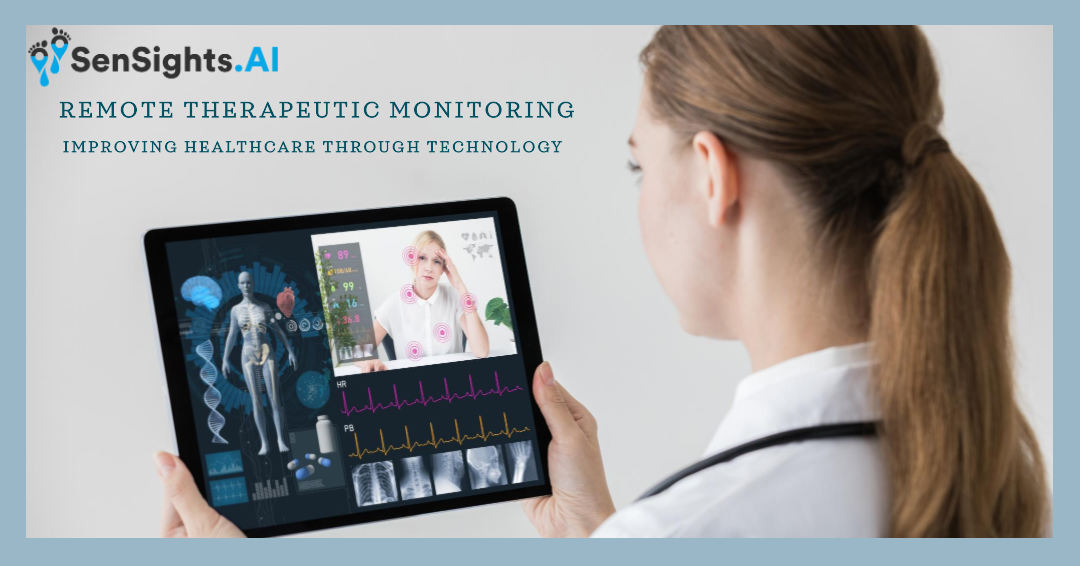Medically Reviewed by: Dr. Gideon Kwok
Key Takeaways
- Remote therapeutic monitoring (RTM) is a new paradigm for chronic disease management that leverages technology to connect healthcare providers with patients and track their health conditions between medical visits.
- RTM has many benefits for both patients and healthcare providers, such as improving patient outcomes, enhancing patient engagement, reducing healthcare costs, increasing clinical efficiency and revenue, and expanding clinical reach and access.
- RTM is different from remote patient monitoring (RPM), which focuses on physiological data, while RTM focuses on non-physiological data, such as pain levels, exercise programs, medication response, and quality of life.
- RTM is a promising solution for chronic disease management that has the potential to transform the way healthcare is delivered and received. RTM is not only a new paradigm for chronic disease management but also a new opportunity for innovation and growth in the healthcare industry.
Check Your Potential Revenue Increase from SenSights.AI
Introduction
Chronic diseases are long-term health conditions that require ongoing management and care. According to the World Health Organization, chronic diseases are the leading cause of death and disability worldwide, accounting for 71% of all deaths in 20201. Some of the most common chronic diseases include diabetes, cardiovascular disease, chronic respiratory disease, cancer, and arthritis.
Managing chronic diseases can be challenging for both patients and healthcare providers. Patients often need to follow complex treatment plans, monitor their symptoms and vital signs, adhere to medication regimens, and make lifestyle changes. Healthcare providers need to track the progress and outcomes of their patients, provide timely feedback and guidance, and adjust the treatment plans as needed.
However, traditional methods of chronic disease management are often inefficient, costly, and inconvenient. Patients may have to visit their healthcare providers frequently, undergo invasive tests and procedures, and deal with multiple medications and devices. Healthcare providers may have limited access to patient data, face difficulties in coordinating care across different settings and specialties, and struggle to keep up with the increasing demand for chronic care services.
What is Remote Therapeutic Monitoring?
This is where remote therapeutic monitoring (RTM) comes in. RTM is a new paradigm for chronic disease management that leverages technology to connect healthcare providers with patients and track their health conditions between medical visits2. RTM allows healthcare providers to monitor a patient’s adherence to a care plan (including medication or lifestyle habits), as well as their musculoskeletal system and respiratory system functioning3.
RTM is different from remote patient monitoring (RPM), which is typically associated with monitoring physiological data, such as blood sugar, blood pressure, oxygen levels, and heartbeat3. RTM focuses on non-physiological data, such as tracking pain levels, exercise programs, medication response, and quality of life4.
Benefits of RTM
RTM has many benefits for both patients and healthcare providers. For patients, RTM can:
- Improve patient outcomes by providing personalized and timely feedback and interventions2.
- Enhance patient engagement and empowerment by involving them in their own care and decision-making2.
- Reduce healthcare costs by avoiding unnecessary visits, tests, procedures, and hospitalizations2.
- Increase patient convenience and satisfaction by allowing them to receive care from the comfort of their homes2.
For healthcare providers, RTM can:
- Improve clinical efficiency and effectiveness by providing real-time and comprehensive data on patient status and progress2.
- Enhance clinical quality and safety by enabling early detection and prevention of complications and adverse events2.
- Increase clinical revenue and reimbursement by billing for RTM services under new codes introduced by the Center for Medicare and Medicaid Services (CMS)4.
- Expand clinical reach and access by serving more patients across different locations and settings2.
RTM is a promising solution for chronic disease management that has the potential to transform the way healthcare is delivered and received. By using technology to bridge the gap between patients and healthcare providers, RTM can improve the quality, efficiency, effectiveness, and satisfaction of chronic care services. RTM is not only a new paradigm for chronic disease management but also a new opportunity for innovation and growth in the healthcare industry.

